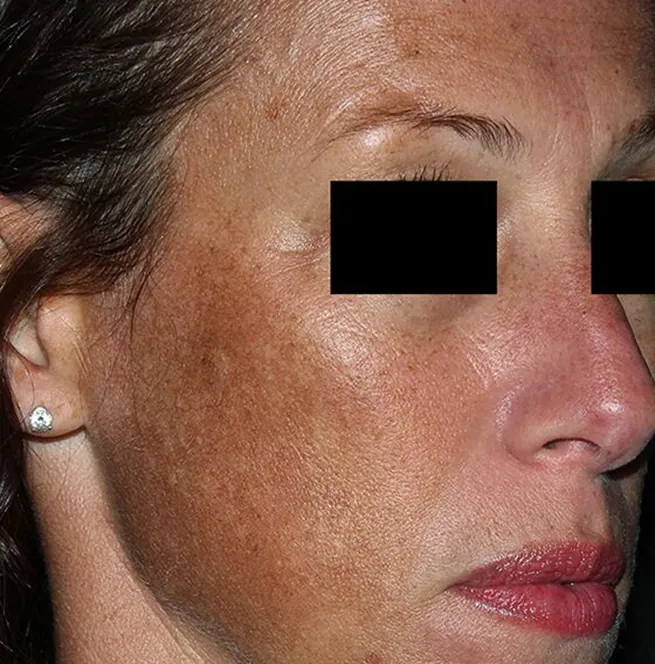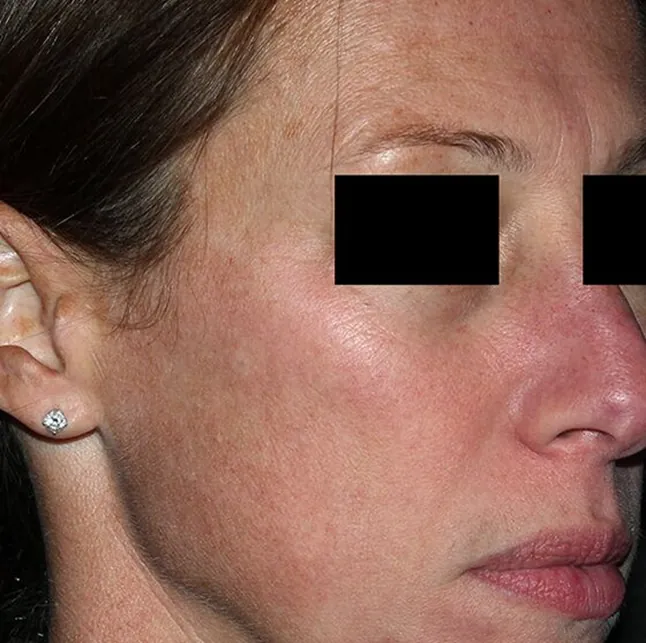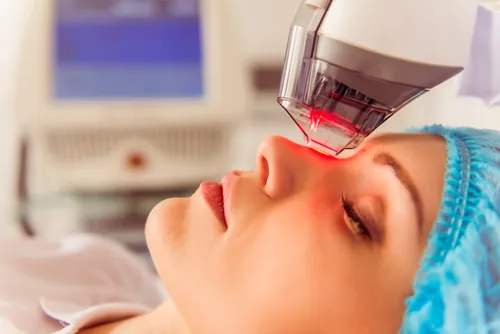What are warts?
Melasma & Pigment Lesion
Melasma is a common skin problem. It causes brown to gray-brown patches, usually on the face. Most people get it on their cheeks, bridge of their nose, forehead, chin, and above their upper lip. It also can appear on other parts of the body that get lots of sun, such as the forearms and neck.
Home » By concern » Melasma & Pigment Lesion
Who gets melasma?
Melasma appears on women’s skin much more often than men’s skin. Just 10% of people who get melasma are men.
People with darker skin, such as those of Latin/Hispanic, North African, African-American, Asian, Indian, Middle Eastern, or Mediterranean descent are more likely to get melasma. People who have a blood relative who had melasma also are much more likely to get melasma.
What causes melasma?
Common melasma triggers (what starts it) include:

Sun exposure
Ultraviolet (UV) light from the sun stimulates the melanocytes. In fact, just a small amount of sun exposure can make melasma return after fading. Sun exposure is why melasma often is worse in summer. It also is the main reason why many people with melasma get it again and again.

A change in hormones
Pregnant women often get melasma. When melasma appears in pregnant women, it is called chloasma, or the mask of pregnancy. Birth control pills and hormone replacement medicine also can trigger melasma.

Skin care products
If a product irritates your skin, melasma can worsen.
Factors contribute to sagging skin
Melasma can fade on its own. This usually happens when a trigger, such as a pregnancy or birth control pills, causes the melasma. When a woman delivers her baby or stops taking the birth control pills, melasma can fade. However, some people have melasma for years, or even a lifetime. If the melasma does not go away or a woman wants to keep taking birth control pills, melasma treatments are available.
The topical include:

Hydroquinone
This medication is a common first treatment for melasma. It is applied to the skin and works to even out your skin tone. Hydroquinone is no longer available without a prescription.

Tretinoin
To enhance skin lightening.

Other topical (applied to the skin) medicines
Azelaic acid or kojic acid may be prescribe to help reduce melasma.

Procedures
If medicine you apply to your skin does not get rid of your melasma, a procedure may succeed. Procedures for melasma include a chemical peel, microdermabrasion, dermabrasion, laser treatment such as PicoSure laser, or a light-based such as IPL procedure. Only a dermatologist should perform these procedures.
How PicoSure laser treated melasma?
PicoSure Laser: one of the best for melasma and dark spots, an innovative advanced treatment for many skin conditions, including melasma. The PicoSure Laser works by delivering high-intensity laser pulses for a very short time, a picosecond, which is about one trillionth of a second. The laser targets pigment and activates natural collagen production in your skin cells, encouraging cycles of regeneration and renewal.
The PicoSure Laser is an uber targeted form of laser. It creates short pulses of laser energy that go straight to the pigment of your melasma, breaking it apart so your body can naturally dispose of it. Other treatments for melasma can sometimes cause discoloration or other effects on the surrounding skin.
The PicoSure Laser is an uber targeted form of laser. It creates short pulses of laser energy that go straight to the pigment of your melasma, breaking it apart so your body can naturally dispose of it.
Other treatments for melasma can sometimes cause discoloration or other effects on the surrounding skin. But with PicoSure, the pigmentation in the melasma skin patch is specifically targeted for treatment, which improves the look of your problem areas while also protecting surrounding skin.


PicoSure treatment also results in skin rejuvenation
PicoSure treatment also results in skin rejuvenation
PicoSure is a quick and easy non-invasive Conventional treatments for melasma may have been long-term treatments, in which you had to do many and wait to see results. With PicoSure Laser, on the other hand, treatments are short and you see results quickly. The laser session itself lasts about 30 minutes, and you feel little to no pain. Depending on your specific skin condition, you may see results in only one session or you may need several to achieve your desired appearance. This PicoSure laser is an excellent tool for improving the appearance of melasma and other flaws in your skin. If you’re excited to welcome in smooth, clear skin, please contact us for an appointment.

What is Light-base treatment( IPL)?
Effectiveness of IPL Treatment
It depends on how severe it is. It can take several months of treatment before acne symptoms improve. It’s best to consult our dermatologist if an individual is unable to adequately control his or her acne. The goal of treatment should be the prevention of scarring (not a flawless complexion) so that after the condition spontaneously resolves there is no lasting sign of the affliction. Here are some of the options available

Redness and Rosacea
After one to three treatments, light therapy can get rid of 50%-75% of broken blood vessels for most people. They could completely go away. While treated veins don’t come back, new ones might show up later.

Hair removal
You’ll get the most benefit if you have light skin and dark hair. It may not work at all if you have dark skin or blond hair.

Sun damage
You may see 70% less of the brown spots and redness caused by ultraviolet (UV) rays.

Acne
IPL may help if you have acne or the scarring it causes. You may need about six sessions to notice a difference. Research is continuing.
Radiance Skin Clinic
Testimonials

Fantastic experience having a mole removed at Radiance!! Completely painless and done in 5 minutes. The doctor and staff are so friendly and welcoming. Highly recommend 😊
Ruby

Dr. Kitisak is very good and professional. I’m very satisfied with the result of getting treatment here. My face is beautiful and glowing. Highly recommended. Nice, clean, and convenient location of the clinic.
ohdelanna

Very good clinic. My husband and I only go to Dr. Kittisak. He is an excellent specialist and quickly helps solve any problem. The prices at the clinic are also very reasonable and low compared to other clinics.
Emilia Krutilina

I have a very sensitive skin condition, been trying numbers of clinic and treatments. Finally I found Radiance, hit the point, fix the issue. Now I’m ready to do selfie without application.
Jakapong Prachuabmoh
Make an appointment
Lorem Ipsum is simply dummy text of the printing and typesetting industry. Lorem Ipsum has been the industry’s standard dummy




